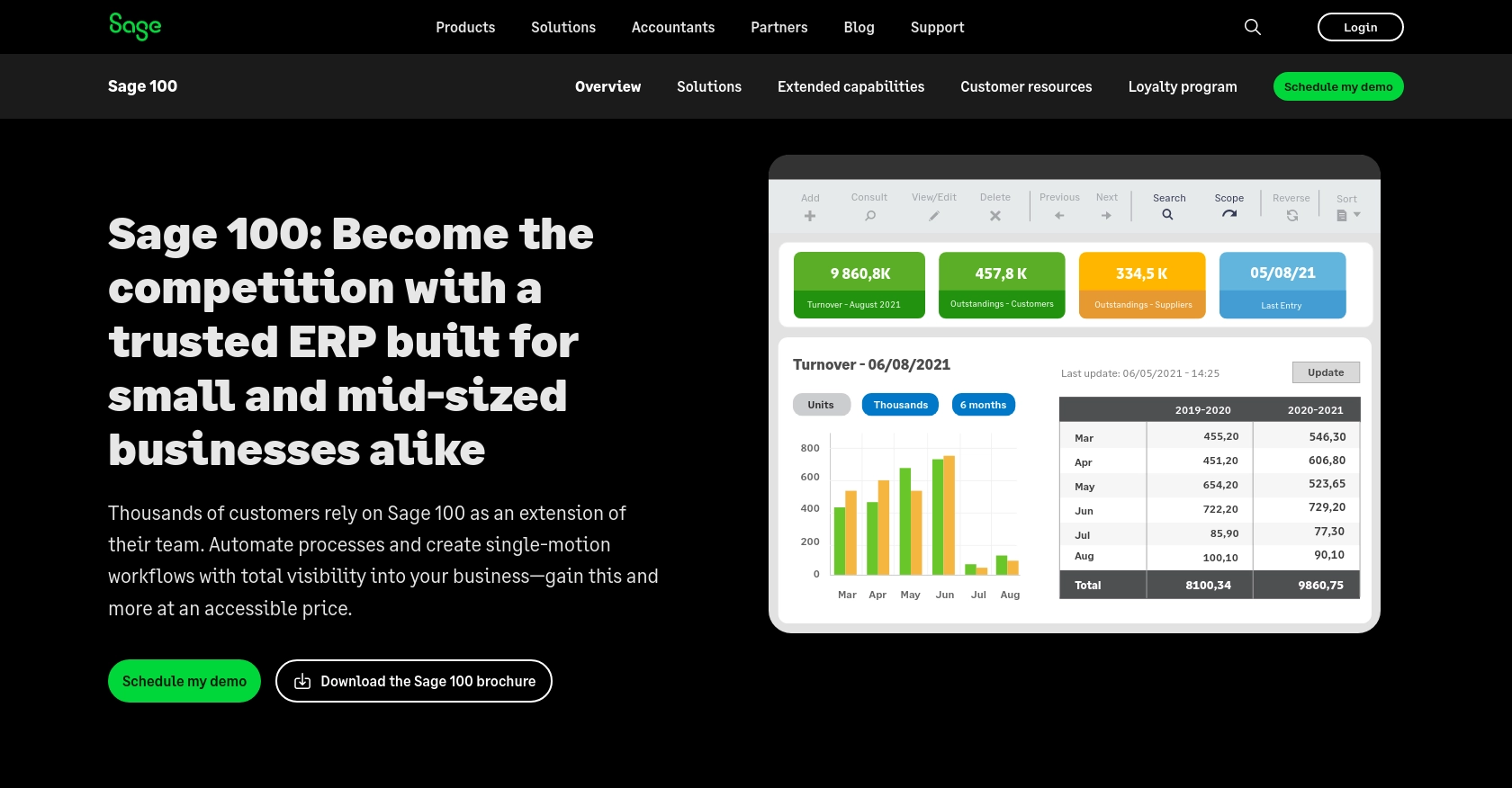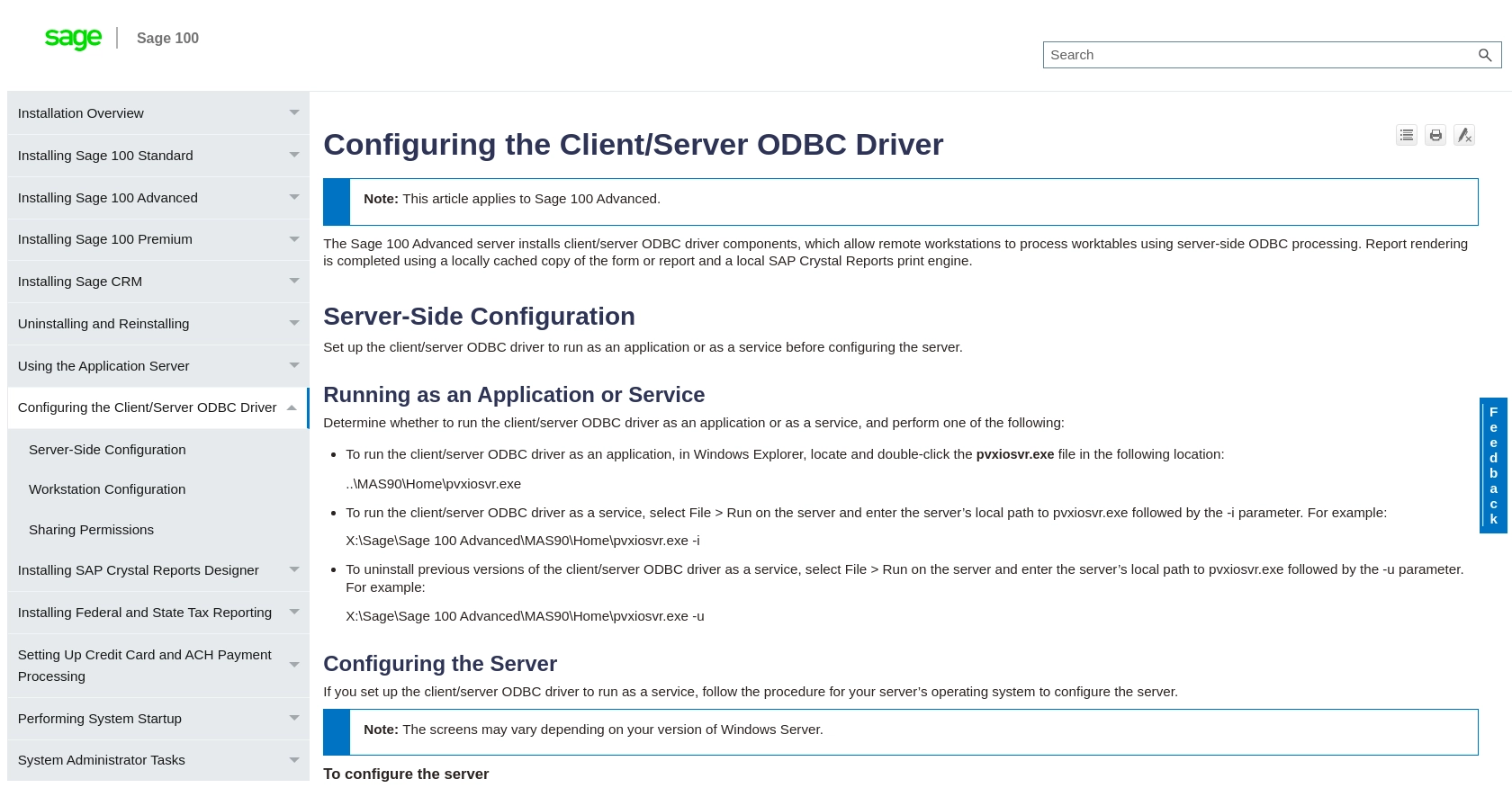Using the Sage 100 API to Get Sales Orders (with Python examples)

Introduction to Sage 100 API Integration
Sage 100 is a comprehensive ERP solution that offers robust tools for managing various business operations, including accounting, sales, and inventory management. It is widely used by small to medium-sized businesses to streamline their processes and improve efficiency.
Integrating with the Sage 100 API allows developers to access and manipulate critical business data programmatically. For example, retrieving sales orders using the Sage 100 API can enable businesses to automate order processing, track sales performance, and enhance customer service by providing real-time order updates.
Setting Up a Sage 100 Test/Sandbox Account for API Integration
Before you can start interacting with the Sage 100 API, it's essential to set up a test or sandbox account. This environment allows you to safely experiment with API calls without affecting live data. Follow these steps to configure your Sage 100 environment for API access.
Install and Configure the Sage 100 ODBC Driver
The first step in setting up your Sage 100 sandbox is to install and configure the Sage 100 ODBC driver. This driver is crucial for establishing a connection to the Sage 100 database. Here's how you can do it:
- Access the ODBC Data Source Administrator on your system.
- Create a new DSN (Data Source Name) that connects to the Sage 100 ERP system. Ensure you use the correct server, database, and authentication settings.
- Verify the connection by testing it within the ODBC Data Source Administrator.
For more detailed instructions, refer to the Sage 100 ODBC Driver Configuration Guide.
Create a Sage 100 Application for API Access
Once your ODBC driver is configured, the next step is to create an application within Sage 100 that will allow you to generate the necessary credentials for API access.
- Log in to your Sage 100 account.
- Navigate to the API management section and create a new application.
- Note down the client ID and client secret provided by Sage 100, as these will be required for authentication.
Configure Authentication for Sage 100 API
Sage 100 uses a custom authentication method. Ensure that your application is set up to handle this authentication process:
- Use the client ID and client secret obtained earlier to authenticate your API requests.
- Implement error handling to manage connection errors, timeouts, and query issues effectively.
For more information on authentication, consult the Sage 100 Authentication Documentation.

sbb-itb-96038d7
Making API Calls to Retrieve Sales Orders from Sage 100 Using Python
To interact with the Sage 100 API and retrieve sales orders, you'll need to use Python, a versatile programming language known for its simplicity and readability. This section will guide you through the process of making API calls to Sage 100, ensuring you have the right setup and code to get started.
Prerequisites for Using Python with Sage 100 API
Before you begin, ensure you have the following prerequisites installed on your machine:
- Python 3.x
- The Python package installer
pip
Once you have these installed, open your terminal or command prompt and install the necessary Python libraries:
pip install pyodbcEstablishing a Connection to Sage 100 Using ODBC
To connect to the Sage 100 database, you'll use the ODBC driver configured earlier. Here's how to establish a connection:
import pyodbc
# Define the DSN and connection parameters
dsn = 'Your_DSN_Name'
user = 'Your_Username'
password = 'Your_Password'
# Establish the connection
connection = pyodbc.connect(f'DSN={dsn};UID={user};PWD={password}')
# Create a cursor object to interact with the database
cursor = connection.cursor()Replace Your_DSN_Name, Your_Username, and Your_Password with your actual DSN, username, and password.
Executing SQL Queries to Retrieve Sales Orders
With the connection established, you can now execute SQL queries to retrieve sales orders from Sage 100:
# Define the SQL query to retrieve sales orders
query = "SELECT * FROM SO_SalesOrderHeader"
# Execute the query
cursor.execute(query)
# Fetch all results
sales_orders = cursor.fetchall()
# Loop through the results and print each sales order
for order in sales_orders:
print(order)This code snippet retrieves all sales orders from the SO_SalesOrderHeader table and prints them to the console.
Handling Errors and Verifying API Call Success
It's crucial to handle potential errors during the API call process. Use try-except blocks to manage exceptions:
try:
# Execute your database operations here
cursor.execute(query)
sales_orders = cursor.fetchall()
except pyodbc.Error as e:
print("Error occurred:", e)
finally:
# Close the connection
connection.close()Ensure that you verify the success of your API calls by checking the returned data against your test/sandbox environment.
For more detailed information on the Sage 100 API and its capabilities, refer to the Sage 100 Sales Order Header Documentation.

Conclusion: Best Practices for Using Sage 100 API with Python
Integrating with the Sage 100 API using Python can significantly enhance your business operations by automating data retrieval and processing. To ensure a smooth integration experience, consider the following best practices:
Securely Storing Sage 100 API Credentials
Always store your Sage 100 API credentials, such as the client ID and client secret, securely. Use environment variables or a secure vault to keep these sensitive details safe from unauthorized access.
Handling Sage 100 API Rate Limiting
Be mindful of any rate limits imposed by the Sage 100 API. Implement logic to handle rate limit responses gracefully, such as retrying requests after a specified delay. This ensures your application remains compliant with API usage policies.
Transforming and Standardizing Data from Sage 100 API
When retrieving data from the Sage 100 API, consider transforming and standardizing it to fit your application's data model. This can involve mapping fields, converting data types, or aggregating information for easier consumption.
Leveraging Endgrate for Efficient Sage 100 Integrations
For developers looking to streamline their integration processes, Endgrate offers a powerful solution. By using Endgrate, you can save time and resources by outsourcing integrations, allowing you to focus on your core product. Endgrate provides a unified API endpoint that simplifies interactions with multiple platforms, including Sage 100, ensuring an intuitive integration experience for your customers.
Explore how Endgrate can enhance your integration capabilities by visiting Endgrate's website.
Read More
- https://endgrate.com/provider/sage100
- https://help-sage100.na.sage.com/InstallGuide/2022/Content/InstallGuide/Config_ODBC_Driver.htm
- https://help-sage100.na.sage.com/2022/FLOR/index.htm#File_Layouts/Sales_Order/SO_SalesOrderHeader.htm?Highlight=SO_SalesOrderHeader
- https://help-sage100.na.sage.com/2022/FLOR/index.htm#File_Layouts/Sales_Order/SO_SalesOrderDetail.htm?Highlight=SO_SalesOrderDetail
Ready to get started?
